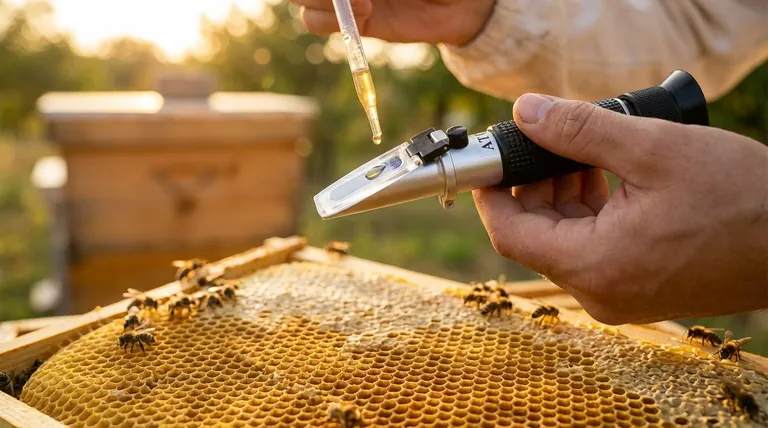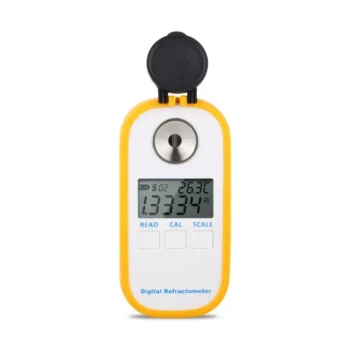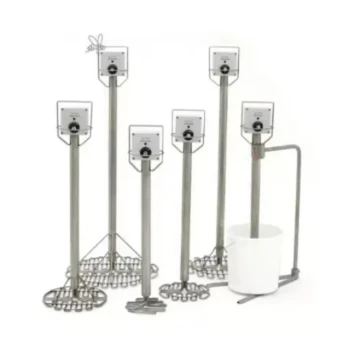To be direct, higher moisture levels are the primary catalyst for honey spoilage. Excess water dilutes honey's naturally high sugar concentration, creating an environment where dormant, sugar-tolerant yeasts can activate, multiply, and begin the process of fermentation. This fermentation ruins the honey's flavor, aroma, and texture, drastically reducing its quality and shelf life.
Honey’s remarkable stability is almost entirely due to its low moisture content. Introducing even a small amount of extra water compromises this natural defense, awakening microorganisms that will inevitably spoil the product.

Why Honey is Naturally Resistant to Spoilage
To understand why moisture is a problem, we must first appreciate why pure, low-moisture honey is so stable. Its resistance isn't based on a single factor, but a combination of hostile conditions for microbes.
The Power of Low Water Content
Properly cured honey typically has a moisture content between 14% and 18%. This creates an environment with extremely high osmotic pressure. Any microbe that lands in the honey is rapidly dehydrated as the sugar molecules draw the water directly out of its cell walls.
A High-Sugar Environment
The supersaturated sugar solution in honey essentially "locks up" the water molecules that are present. This means there is very little "free" or "active" water available for microorganisms to use for their own metabolic processes, effectively starving them.
How Excess Moisture Unlocks Microbial Growth
When the moisture content rises, this delicate balance is destroyed. The honey's natural defenses are systematically dismantled, creating a favorable environment for spoilage.
Crossing the Critical Threshold
The industry standard is clear: honey with a moisture content above 19% is at high risk of fermentation. This additional water is enough to dilute the sugars and provide the "free" water that dormant yeasts need to thrive.
Awakening Dormant Yeasts
Honey naturally contains sugar-tolerant yeasts (osmophilic yeasts) that are perfectly adapted to survive in high-sugar environments. In dry honey, they lie dormant. Once moisture levels rise, these yeasts activate and begin to multiply rapidly.
The Fermentation Cascade
Active yeasts consume the sugars in honey for energy. This metabolic process produces byproducts: primarily alcohol and carbon dioxide gas. This is fermentation, and it is the primary method by which high-moisture honey spoils, altering its flavor and composition.
Common Pitfalls and Broader Consequences
Controlling moisture is a critical aspect of honey production and storage. Failure to do so leads to predictable and costly outcomes.
Common Sources of Excess Moisture
Excess water doesn't appear on its own. It is typically introduced through specific handling mistakes:
- Harvesting Too Early: Uncapped or partially capped honeycomb has not been fully dehydrated by the bees and will contain excess moisture.
- Humid Climates: Processing or storing honey in a high-humidity environment can allow it to absorb moisture from the air.
- Improper Extraction: Introducing water into the equipment during the extraction or bottling process is a common source of contamination.
More Than Just Fermentation
While fermentation is the most significant issue, high moisture causes other problems. It can lead to a loss of viscosity, alter the honey's natural flavor profile, and contribute to nutrient degradation over time.
Downgrading and Financial Loss
Honey that has begun to ferment is no longer suitable for retail sale as table honey. At best, it can be downgraded to "baker's honey," a lower-quality and less valuable product. In severe cases, it is a complete loss.
Making the Right Choice for Your Goal
Protecting honey from moisture is non-negotiable for preserving its quality. Your specific actions depend on your role in the honey's journey from hive to table.
- If your primary focus is harvesting (Beekeeper): Harvest honey only after the bees have capped at least 80% of the cells, as this is their sign that the honey is at the correct, low moisture level.
- If your primary focus is processing (Producer): Use a refractometer to test moisture content and ensure your extraction and bottling facility is a low-humidity environment.
- If your primary focus is storage (Consumer): Always keep honey in a sealed, airtight container in a cool, dry place to prevent it from absorbing atmospheric moisture.
Ultimately, controlling moisture is the single most important factor in preserving the unique quality and near-indefinite shelf life of honey.
Summary Table:
| Moisture Level | Risk Level | Primary Consequence |
|---|---|---|
| Below 18.6% | Safe / Low | Honey is stable; microbial growth is inhibited. |
| 18.6% - 19% | Moderate | At risk; fermentation can begin under certain conditions. |
| Above 19% | High / Critical | Fermentation is highly likely; spoilage occurs. |
Protect Your Honey's Quality and Value
For commercial apiaries and beekeeping equipment distributors, controlling honey moisture is critical to preventing spoilage and financial loss. HONESTBEE supplies the professional-grade tools you need, from refractometers for precise moisture testing to airtight storage solutions that safeguard your product from harvest to market.
Ensure every batch meets the highest quality standards. Contact our experts today to discuss wholesale supplies tailored to your operation.
Visual Guide

Related Products
- Precision Honey Refractometer Instrument for Quality Assessment
- Digital Honey Refractometer for Precision Measurement of Optimal Honey Quality
- Easy Use Manual Stainless Steel Honey Press for Honey Comb
- Natural Wood Honey Dipper for Tea Coffee and Desserts
- Inverted Squeezable Honey Jar with No Drip Flip Top Cap for Easy Pouring
People Also Ask
- Why is a honey refractometer essential for honey harvesting? Protect Your Harvest from Spoilage
- What are the benefits of using a Pocket Digital Honey Refractometer? Achieve Precision & Speed in Honey Quality Control
- What is a honey refractometer and what is its purpose? Ensure Honey Quality and Prevent Spoilage
- Why is a honey refractometer important for beekeepers? Ensure Quality and Prevent Fermentation
- What are the key points for proper usage of a honey refractometer? Ensure Accurate Moisture Readings Every Time



















